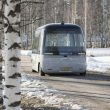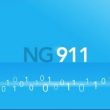No place to hide
The universe is a miraculous place. It breathes life into the abyss one moment and takes it away the next. It also holds enormous power to disrupt the routines of earthlings who suddenly lose radio communications, seemingly without reason.
To blame are space weather phenomena caused by bursts of energy released by the sun and sent hurtling toward Earth. A new $92 million grant awarded to the University of Colorado will support NASA-deployed and National Oceanic and Atmospheric Administration-operated geostationary operational environmental satellites, or GOES-R, that monitor such solar-based space weather events, said Frank Eparvier, a research scientist at the university’s laboratory for atmospheric and space physics.
Solar flares and solar radiation storms are two types of space weather events that interrupt not only terrestrial wireless communications, but also space-based technologies such as satellites. Eparvier said the grant supports the development of extreme ultraviolet and X-ray irradiance sensors, or EXIS, to better predict such events. The X-ray sensor looks at solar flares while the extreme UV sensor detects variations that lead to flares and radiation storms. Specifically, the instruments used include spectrographs — devices that break apart sunlight into different wavelengths — and photometers, which use a filter that selects a wavelength’s range and measures the spectrum.
“The instruments will look at the sun and measure the absolute brightness of the sun in X-rays and extreme ultraviolet light,” Eparvier said. “Those wavelengths of light are important because they drive variability in the Earth’s upper atmosphere where satellites fly and where communications and GPS navigation have to transmit through.”
The university is under contract with NASA to deliver the payload by 2012, with a launch expected on the next generation of GOES-R satellites in 2014. In the meantime, space weather events will continue to harm communications with little warning, Eparvier said.
Joe Kunches, a NOAA space scientist at the agency’s Space Weather Prediction Center in Boulder, Colo., said solar flares are intense, short-lived eruptions that can take several forms and are seen as bright areas on the sun in optical wavelengths and as bursts of noise in radio wavelengths. Such solar events can last minutes to hours and cause havoc on wireless communications.
Kunches said the main element of space weather that affects communications on Earth is the light, or photons, which are part of solar flares. The emissions carry electromagnetic radiation of all wavelengths, including gamma rays, X-rays, ultraviolet light, visible light, infrared light, microwaves and radio waves. Flares only affect communications on the side of the Earth currently facing the sun, he said.
The Earth’s ionosphere is usually calm and not overly populated with patches of electrons. As a result, it easily supports radio communications. But the extra input of photons into the atmosphere caused by a solar flare hinders those communications, which must punch their way through the ionosphere to reach a satellite, Kunches said.
Larry Combs, a space scientist who works with Kunches at NOAA, pointed to the massive solar flare eruption on Oct. 28, 2003, which crippled an experimental communications satellite owned by the Japanese Aerospace Exploration Agency as a result of an onslaught of photons and a mix of other charged particles.
In comparison, solar radiation storms emit radiation that is hazardous to satellites, as high-energy particles damage computer memory and solar panels, or interfere with high-frequency communications and low-frequency navigation signals. In addition, excess electrons that land on the surface of a satellite as a result of a solar radiation storm can cause a spark, which renders the satellite inoperable, said Dr. Dale Gary, chair of the physics department at the New Jersey Institute of Technology.
Gary predicted that because 2008 lands in the mid-tier of the solar cycle, a low probability for major solar flares exists this year. But as the cycle increases and more powerful solar flares reach Earth, high-intensity radiation and radio waves will affect communications directly and immediately. For example, radio receivers will receive not only their signal but also noise from the sun, which causes interference. While such bursts generally have a negative effect on satellite and land mobile radio communications, they have a profound impact on cell phone towers with antennas that face the rising or setting sun.
“If the sun is just rising or setting … and the [transmitting] tower is between you and the sun — right along the same line of sight — you can get a momentary interruption where the sun creates a lot of radio noise,” Kunches said.
Complicating matters is the unpredictability of solar activity, Gary said. “We have absolutely no warning when these events will occur.”
When the current 11-year solar cycle reaches its maximum phase, likely in 2011 and 2012, more disruptive events will occur. This is not a good thing for most communications users, Kunches said. High-frequency radio users may suffer complete blackouts that last for hours. In addition, large amounts of solar-generated radio noise may interfere with VHF signals.
Paradoxically, high-frequency radio users also might benefit from solar weather events because, during the solar cycle maximum, the sun actually brightens in terms of its ultraviolet output. This solar radiance serves as a reflective mirror. As a result, HF radio operators can use higher frequencies to communicate during the maximum phase of the solar cycle compared to what is available during the minimum phase. “So there is a good part to getting more space weather going on,” Kunches said.
All types of solar storms can have a major effect on terrestrial communications. For instance, magnetic clouds produced from the sun — if directed toward Earth — can kill communications used by pilots flying airplanes over the north and south poles. In addition, radiation from solar storms can cause satellite signal delays and often jam or degrade the accuracy of global positioning systems — whether in space or on the ground.
Paul Kintner, a professor of electrical and computer engineering at Cornell University, said magnetic solar storms are the main space weather phenomenon that affects GPS systems. He said predicting the strengths of the bursts varies, and recent events show strong storms can develop both in the minimum and the maximum solar cycle — during which accelerated bursts cause many GPS receivers to stop operating.
“People located where the signals are already compromised, such as under tree cover or canyons, will be most affected by these bursts,” he said.
However, Kintner said a user in an open area with a standard handheld receiver on a single frequency probably is not going to be affected by solar bursts. He acknowledged that little is known about space weather activity and its effect on wireless communications.
“One of the things we discovered was that we don’t understand the history of solar bursts,” Kintner said. “We’ve only been recording the sun’s activities for 50 years. So you have to come to one or two conclusions: Either we don’t understand the sun, there’s more variability in the sun than we are aware of, or all the previous measurements are incorrect.”
NOAA’s Kunches said the trick is in knowing when Mother Nature has bared her teeth and a solar eruption has occurred, as savvy radio people know how to respond by making adjustments in the frequency being used. To help, the agency offers an alert system, which has been operational for nearly 40 years. People can sign up for the service at NOAA.gov and receive space weather event alerts via e-mail to their wireless devices.
“As the cycle starts to ramp up and as we get more space weather activity and solar flares, I think it’s prudent for the users … to sign up for these alerts,” Kunches said.
Gray said wireless communicators often misinterpret transmissions as equipment failures instead of a solar event. “It’s important to alert people there is a solar flare in progress and any difficulties in communications can be ascribed to the solar event — so wait it out for 10 minutes or an hour and it will be over,” he said. “The NOAA system delivers the information almost immediately.”
The current understanding of the next maximum solar cycle, expected to hit around 2011, is that it will be at least as large as previous cycles — possibly even larger. Given the ubiquity of wireless technology, even if events are smaller than what has been experienced in the past, the impact could be greater.
“I think the difference is that as [wireless communication] technology becomes more and more widespread, any effects caused by this kind of activity affects more people,” Gary said. “An outage in 2001 may not have been as critical to some mission requirements that by 2011 will create bigger problems.”

















